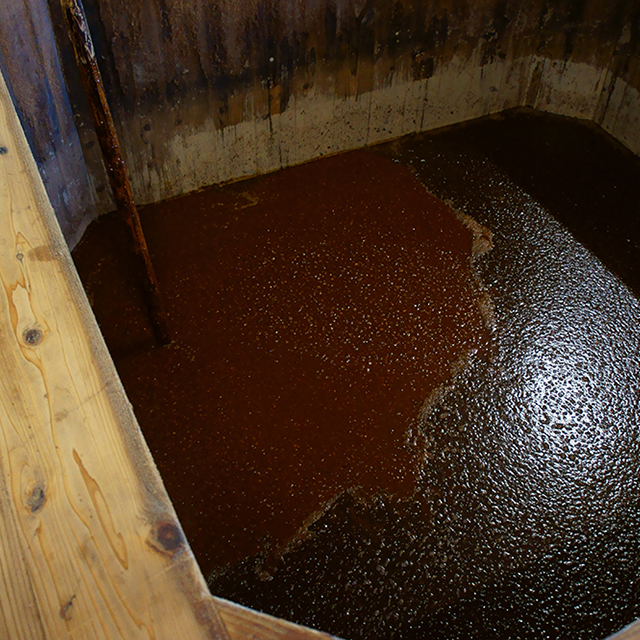
Mastering Shoyu making from a pro brewer at Daitoku Shoyu (vol.1)
Daitoku Shoyu has been making their Shoyu in a natural brewing method for over 100 years in Yabu city, a beautiful mountainous district in the Northern part of Hyogo prefecture. Under their policy “Organic, community and tradition” they work together with local famers to use their production, and by doing so they take a full part in reintroduction of oriental white storks in Toyooka city. They cultivate crops by the stork friendly farming methods, and Daitoku Shoyu gladly use their harvest for one of their product called “Kounotori (means “oriental white storks”) Shoyu”.

Yabu city, mountainous district in northern Hyogo
This spring I asked Takushi Jokei, the fourth generation and the current president at Daitoku Shoyu if he could teach me Shoyu making that could be applied to home brewing. Though I have been making Shoyu in Netherlands, I never learnt the Koji making particularly meant for Shoyu from a professional brewer in Japan.
Together with his farther Kozo Jokei, the current chairperson Takushi accepted my request with great enthusiasm. They had been working hard to spread home Shoyu making already for a while, and now it was time for them to share Koji making with public too.
As you might know, a general Koji making requires 3 days time. So, it isn’t easy to find a brewery that gives a whole-process-Koji class just as well as attendees who could spare an extended weekend in Japan. To overcome this problem, we decided to jam-pack the whole process in 1.5 day. The idea is to prepare the Koji from different starting times and use them in the workshop to let people experience the condition of each. This is the feasible way that I coordinate my Koji workshop in Netherlands up to now, but I had no idea if and how Takushi can manage it for Shoyu Koji making.
He has just taken over a leadership at Daitoku Shoyu this spring and has been actively launching many projects to shake up the public attention on the industry.
Self-Shoyu making kit he promotes is one of the tools to educate people so that they can experience the traditional making of Shoyu and understand what it takes without depending on the industrialization.
It’s a kick off event and the whole Jokei family put all their passion to let us experience the A to Z of Shoyu making process. This is the first batch of my full report.
↓ Read the following report vol.2 ↓
Mastering Shoyu making from a pro brewer at Daitoku Shoyu (vol.1)
✔日本語記事(Japanese article)
大徳醤油さんに教わる醤油づくりA to Z 醤油じかん上級編(前編)
About the ingredients of Shoyu
To start with, Kozo Jokei gave us a lecture on how Shoyu is made in general.

Entrance of Daitoku Shoyu
JAS (Japanese Agricultural Standard) defines the usage of soybeans in Shoyu making
Shoyu is basically made from soybeans and/or wheat, salt and water. The history traces back to 800 BC with an appearance of the letter “醬” (pronounces as “Jiang”) in an old Chinese document.
According to JAS, the definition of Shoyu is “a liquid condiment that is aged from Moromi mash that’s made from brine or previously made Shoyu and Koji. The Koji is made from cooked soybeans and/or wheat inoculated with Aspergillus oryzae.”.
This means that you cannot really call it Shoyu if no single soybean is used in production. Mikawa’s Shiro Shoyu is a good example. Their Shoyu has a very light colour because it’s made from wheat only. If you look at the label it states as “brewed wheat seasoning” instead of “Shoyu”. Tamari on the other hand, is made from 100% soybeans or a combination of soybeans and a small amount of wheat.
The market share of Shoyu made from whole soybeans is only 15%
The rest of 85% is in fact made from defatted soybeans. The fat is extracted by solvent such as hexane, which is volatile so that only fat would remain when the mixture is heated at 75℃. After that you get the soy oil and flake-like soybeans that is used for Shoyu making. More than 90% of Shoyu was made from this up to 1970s.
Pre-study on Shoyu making process
Before we move to the venue of the workshop, Kozo briefly explained the process of Shoyu making.
“First Koji, second “Kai” and finally “Hiire” – The most important part is Koji making.
As mentioned above Shoyu is made from soybeans, wheat and salt. Wheat has to be roasted and cracked before adding the steamed soybeans. When both soybeans and wheat are cooled down, Koji starter is inoculated. The mixture must be kept warm for 44 hours (3 days) in the industrial Koji making, and 4 days when making at home, according to Kozo.
Then you make 16-16.5% brine and add Koji to it. Mix it well, and this is now called Moromi (mash) that needs to be fermented and matured over time. After a year or more, it will be press filtered, and the liquid and the lees are separated. This liquid will be pasteurized at about 85 degrees. After the filtration and checks, new Shoyu is born.
As in this quote “First Koji, second “Kai” and finally ”Hiire””, the most important thing is to make good Koji. “Kai” means mixing Moromi and “Hiire” means pasteurization after filtration.
Why are both soybeans and wheat needed for Shoyu Koji making?
While many other ferments like Miso, Sake and vinegar are made from rice, Shoyu need protein rich soybeans and carbo rich wheat.
During the fermentation process, the protein is roughly broken down into peptide by peptidase, then into amino acid by protease. Peptide adds body and thickness, and amino acid adds Umami to Shoyu, says Jokei. At the same time the fat in soybeans is broken down into glycerin by lipase, adding sweetness to Shoyu.
Carbohydrate in wheat is broken down to glucose by amylase, and microbes feed on it. Next lactobacillus eats the microbes and lactic acid fermentation takes place, and onto alcohol fermentation by yeast. This way we can see that glucose is an energy source for microorganisms and inside Moromi mash there are a number of activities that they turn soybeans and wheat into Shoyu.
When amino acid meets sugar, Maillard reaction occurs. This produces melanoidin that has strong antioxidant effect and makes Shoyu darker.
The biogeocoenosis is protected by microdiversity. This is the way Shoyu is naturally brewed.
“I’d be happy if many different microbes live in my Kura (brew house), not only the ones that’s useful for Shoyu making.”, says Kozo. This would create a supportive environment that natural Shoyu brewing at Daitoku Shoyu finds important.
How to prepare soybeans for Shoyu making
Kozo taught us several tricks on how to prepare soybeans for Shoyu making.
Soak soybeans completely
First, soybeans need to be washed and soaked overnight. It becomes about 2.25 times heavier and the volume increases 2.4 times. Soaking the beans completely is very important to ensure uniform cooking. Koji starter can work on the protein easier by heat denaturation.

Lecture by Kozo Jokei, the third generation at Daitoku Shoyu
“Koji mold grows on water, rather than on soybeans.”, says Kozo. The mycelia stretch in search of water. If you crack the inoculated soybeans, you can see the difference in colour where it penetrated like rice Koji.
He also said that it’s important not to soak the beans too long so as not to cause the spoil of water and loss of the nutrition in the beans.
Daitoku Shoyu’s secret math on how to calculate the soaking time
What was interesting is this specific (and simple!) equation that Jokei worked out from years of their experience.
That is…
[30 – temperature of water = hours of soaking soybeans]
30 is a reference value that they came up after trial and error. You deduct the temperature of water you soak the soybeans, then you know how many hours you need to soak the beans. So for instance, if the water temp is 18 °C you need to soak the beans for 12 hours.
After the beans are soaked, they need to be steam cooked until soft.
How to prepare wheat
Roast and crack wheat
At their Kura factory, they roast the wheat with river sand using a burner. For home Shoyu making, you can use a flying pan until they swell a little. Be careful not to burn them. The trick is to splash some water during roasting. After the wheat is roasted, crack them in a blender.
Inoculating starter
Sprinkle koji molds on cooled soybeans and wheat
When soybeans and wheat are cooked, cool them down to 40℃. This is to ensure Koji mold to activate. You need to keep a small portion of cracked wheat to mix the starter in, so the entire volume of the starter increases. This makes it easy to inoculate starter evenly to the cooked soybeans and wheat.
Temperature course of Koji
After Koji starter is sprinkled, the mixture needs to be wrapped up and kept warm. The best temperature to start Koji for Shoyu making is 28℃. After 17 hours, and then Koji mold starts moving and the temperature goes up. When it reaches 32°C, the mixture must be mixed to release some heat. After that, it needs to be mixed again when it reaches 34°C to bring it down to 25°C. This is the temperature to be kept until the end. From the point you wrapped the Koji up, it takes about 44 hours all together until it’s ready.

Kozo Jokei explaining the temperature change.
Do not mix it too much. Keep it hydrated.
When doing this at home, the temperature of Koji tends to go up easily. This means that you end up mixing it frequently to release the heat. However, mixing Koji too much might slow down the growth of Koji mold, and cause the contamination of other unwanted bacteria.
Good Koji has enough moisture. It’s important not to let Koji dry out during the incubation process. The trick here is to bring the temperature up at earlier stage and mix it quickly and leave it as much as possible.
Now the tour in Daitoku Shoyu’s brew factory
After the Kozo’s lecture, Takushi guided us into their brew factory.
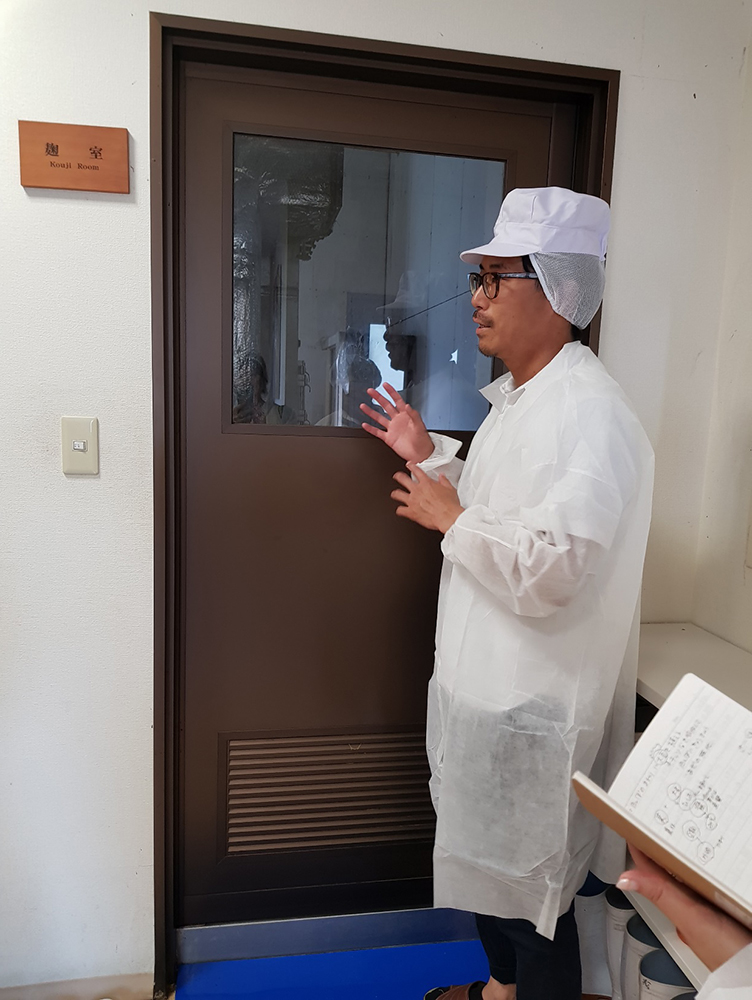
The entrance is labeled as “Koji room”.

Takushi guided us into their brew factory.
Roasting wheat with river sand
The photo above is the machine to roast wheat. The wheat is roasted together with river sand, and they will be separated by centrifuge. Soybeans and wheat are measured in volume rather than weight according to the traditional recipe.
“If you look at the wall, you can see the colour is different. This is due to the spores from the starter. We even have a saying “the brewer can stand on his own after the brew house gets black.”, said Takushi.
Mixing wheat and soybeans to make Koji
In the next step the roasted wheat is mixed with soybeans. Koji starter they use was from Higuchi Matsunosuke Shoten.
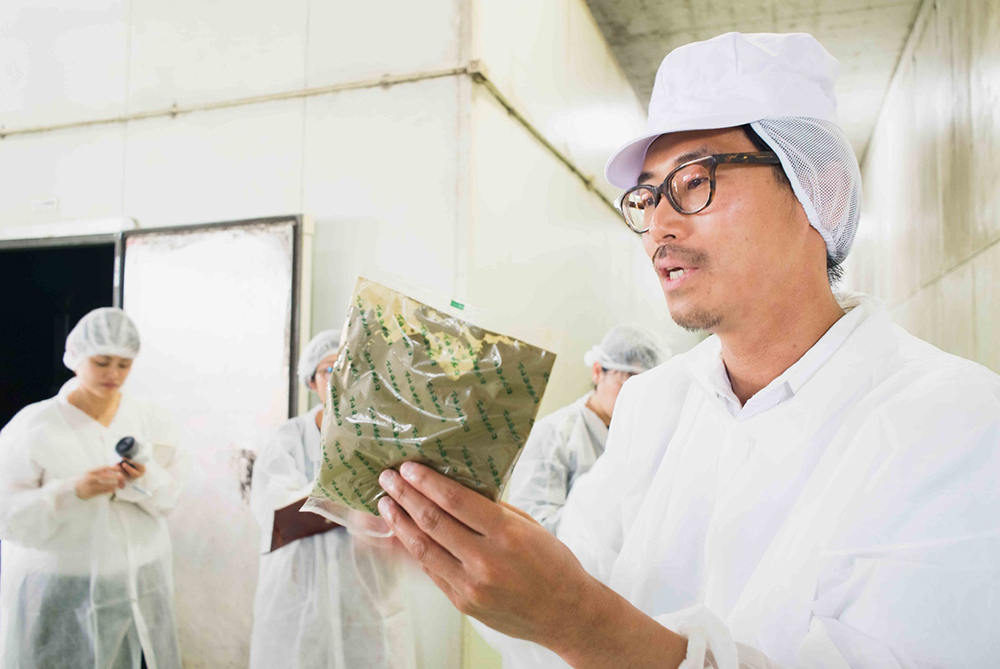
Takushi explaining about Koji starter.
This is their Koji incubation room. The inoculated soybeans and wheat are transferred here and spread in a thin layer.
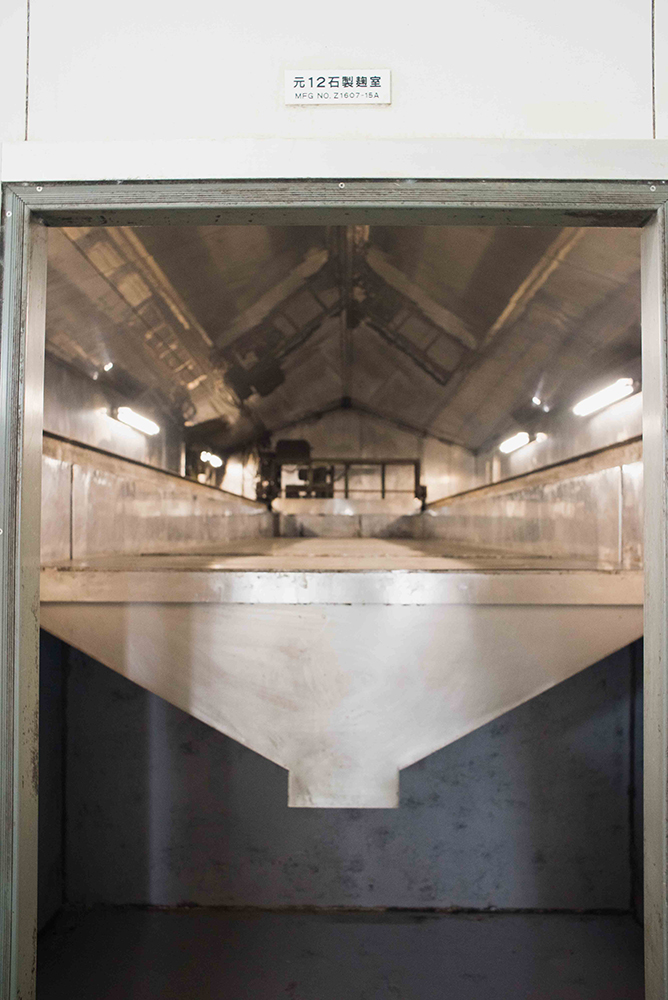
Daitoku Shoyu’s incubator
In our tradition people used to control the temperature by hands day and night. Now they can rely on the machine for easier control. The mixture will be 1.2 times heavier when they become Koji.
Kura (brew room) at Daitoku Shoyu
Upstairs inside the factory, they have a brew room.
This was renovated around 13 years ago. Together with local carpenters, they stuck Japanese cedar wood on concrete tanks. There were two reasons behind this approach.
The number of artisan who can make big wooden vats in Japan has been decreasing. Considering the circumstance, Daitoku Shoyu decided to make the maintenance of their wooden tanks easy for themselves. The second reason is to create a favorable environment for the local microbes in this area by using local cedar wood from Ohya area.
This brew room is designed as one huge vats and all walls, and the ceiling are attached to the cedar wood.
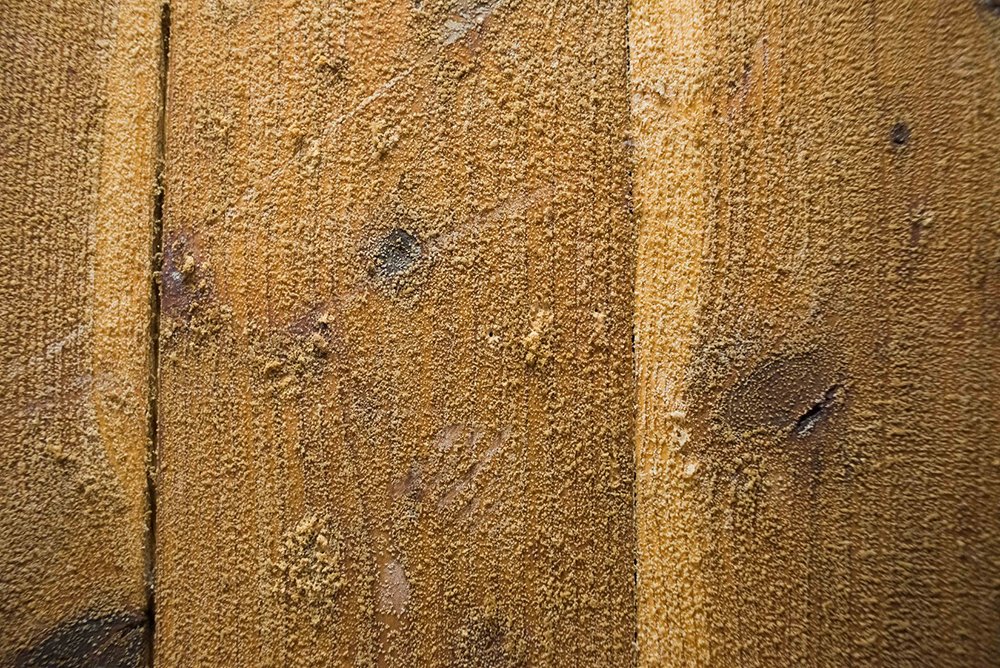
Just like seen on the surface of wooden vats, walls and the ceiling are covered in fluffy mold.
Every tank contained a different Moromi at different stage
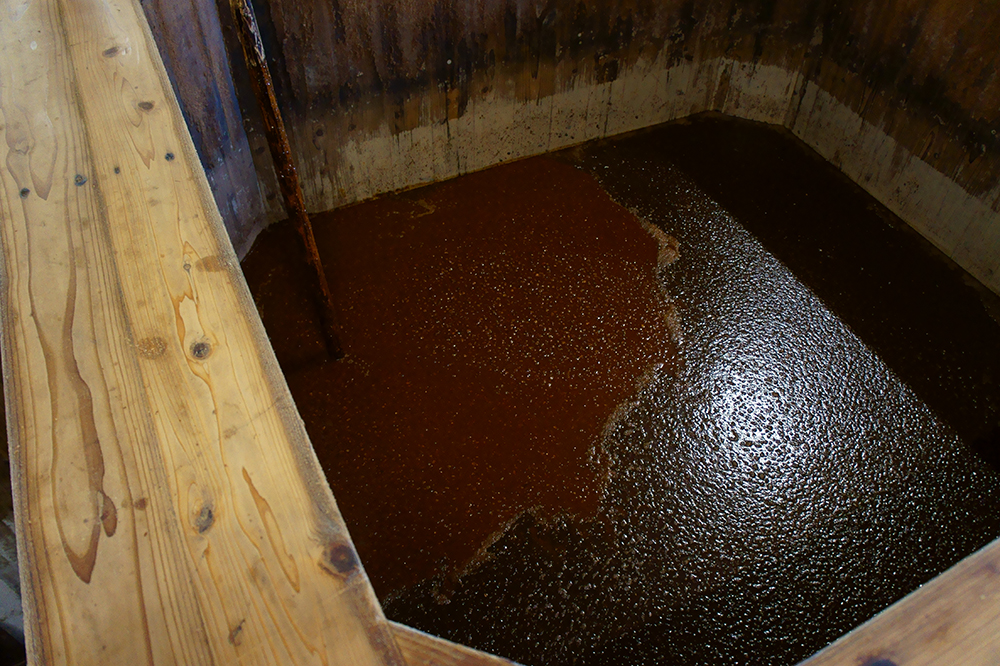
Tank with Moromi
Every tank contained a different Moromi at different stage. They are also divided by types of Shoyu, production area or farming methods of ingredients. For instance one Moromi was made from locally grown soybeans in Tottori prefecture and that will be used for school lunch in Tottori. Another Moromi is made from soybeans and wheat grown in oriental white stork friendly farming method.
Shoyu making with full trust on microdiversity
Unlike Shoyu made with addition of yeast and extra heat retention in FRP (Fiberglass Reinforced Plastics) tanks that speeds up the fermentation time, Daitoku Shoyu totally relies on the natural process done by wild yeast and bacteria living in their brew house. All tanks are left open to catch everything in the air.
To make Moromi, they use 1.1 times more brine to the volume of the Koji at Daitoku Shoyu, but at home they suggest using more brine, so it would be easy to filter Shoyu. The Moromi needs to be roughly mixed every day for the first one week, and after that less times depending on the growth of filmi yeast on the surface. If you see the film yeast growing on the top, you can consider it as a sign that Moromi needs oxygen.
To make good Shoyu, it’s important to increase the acidity by lactic acid fermentation so the environment will become ideal for yeast fermentation afterwards.
Natural fermentation through four seasons
“Shoyu prepared in spring and autumn are different, but both are nice in its own way. I don’t really intend to make exactly the same Shoyu all year around. I think it’s better that we appreciate what comes out from nature.”, says Takushi. I could tell how local people and microbes love the way Daitoku Shoyu works.
Shoyu lees are used to feed cows in Awaji island
This is their filter press. For the first three days Shoyu is extracted by Moromi’s own weight. After that they use this machine to add pressure to finish squeezing. The lees are transported to Awaji island to feed cows.

Takushi Jokei explaining how their filter press works.
Takushi says that freshly squeezed Shoyu has a red colour, and Shoyu that’s brewed naturally (about 16% salt content) gives less impact on high blood pressure compared to low-salt Shoyu (about 7% salt content).
He thinks that’s a proof that Shoyu has been valued as a way to take salt into human’s body in a safe way in our tradition.
In the next article, we will finally make Koji for Shoyu making. Stay tuned.
↓ Read the following report vol.2 ↓
Mastering Shoyu making from a pro brewer at Daitoku Shoyu (vol.1)
✔日本語記事(Japanese article)
大徳醤油さんに教わる醤油づくりA to Z 醤油じかん上級編(前編)
Cooperation
Daitoku Shoyu
Daitoku Shoyu online shop
Daitoku Shoyu Facebook page
Daitoku Shoyu Instagram
